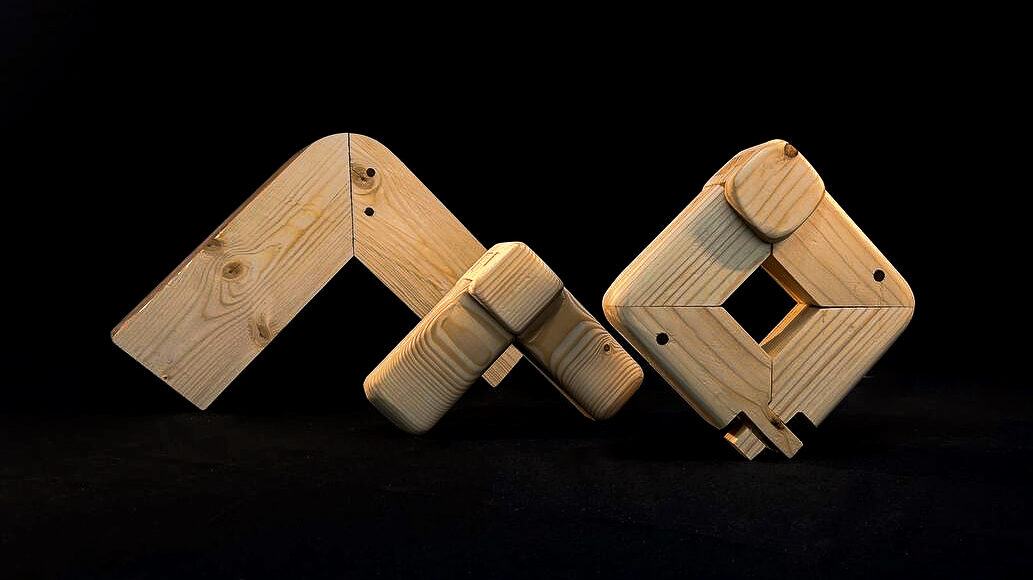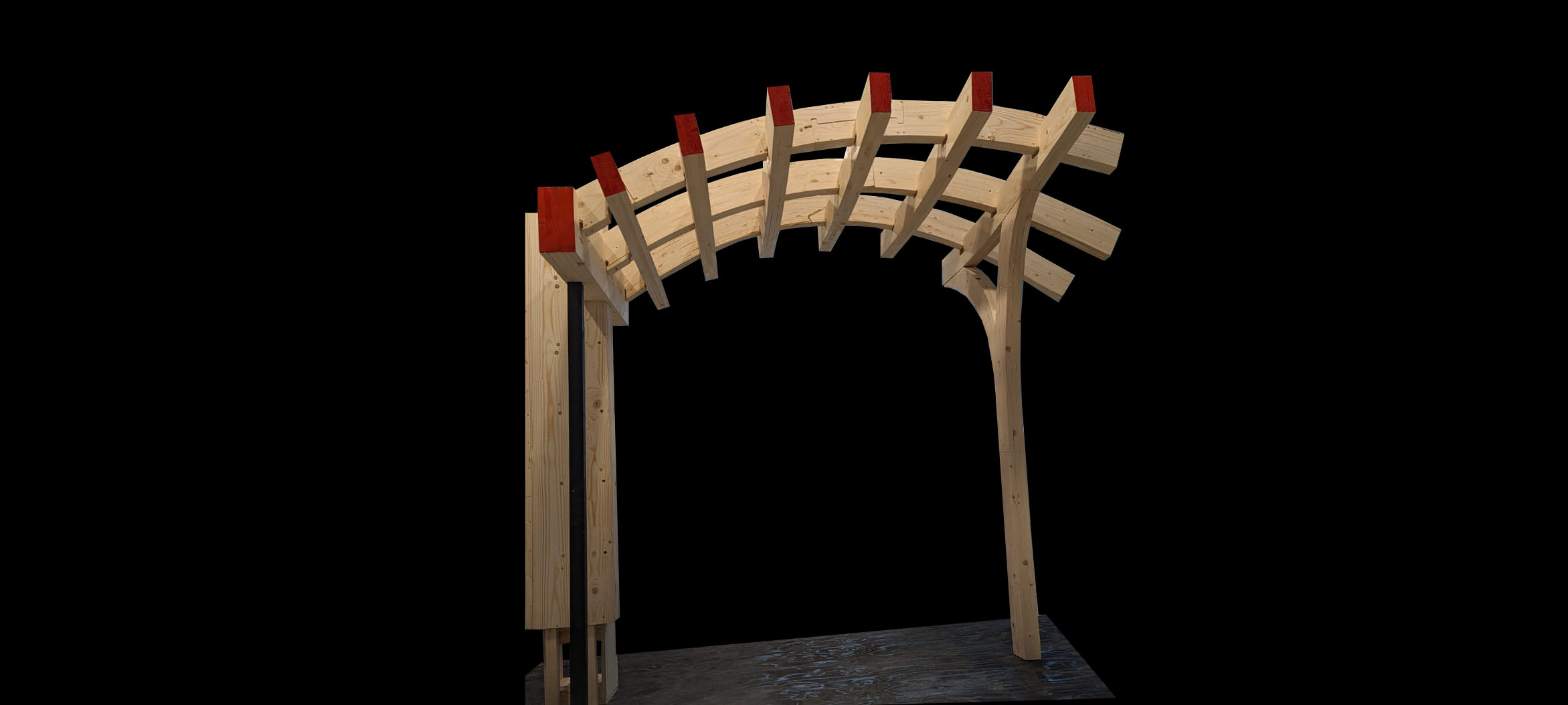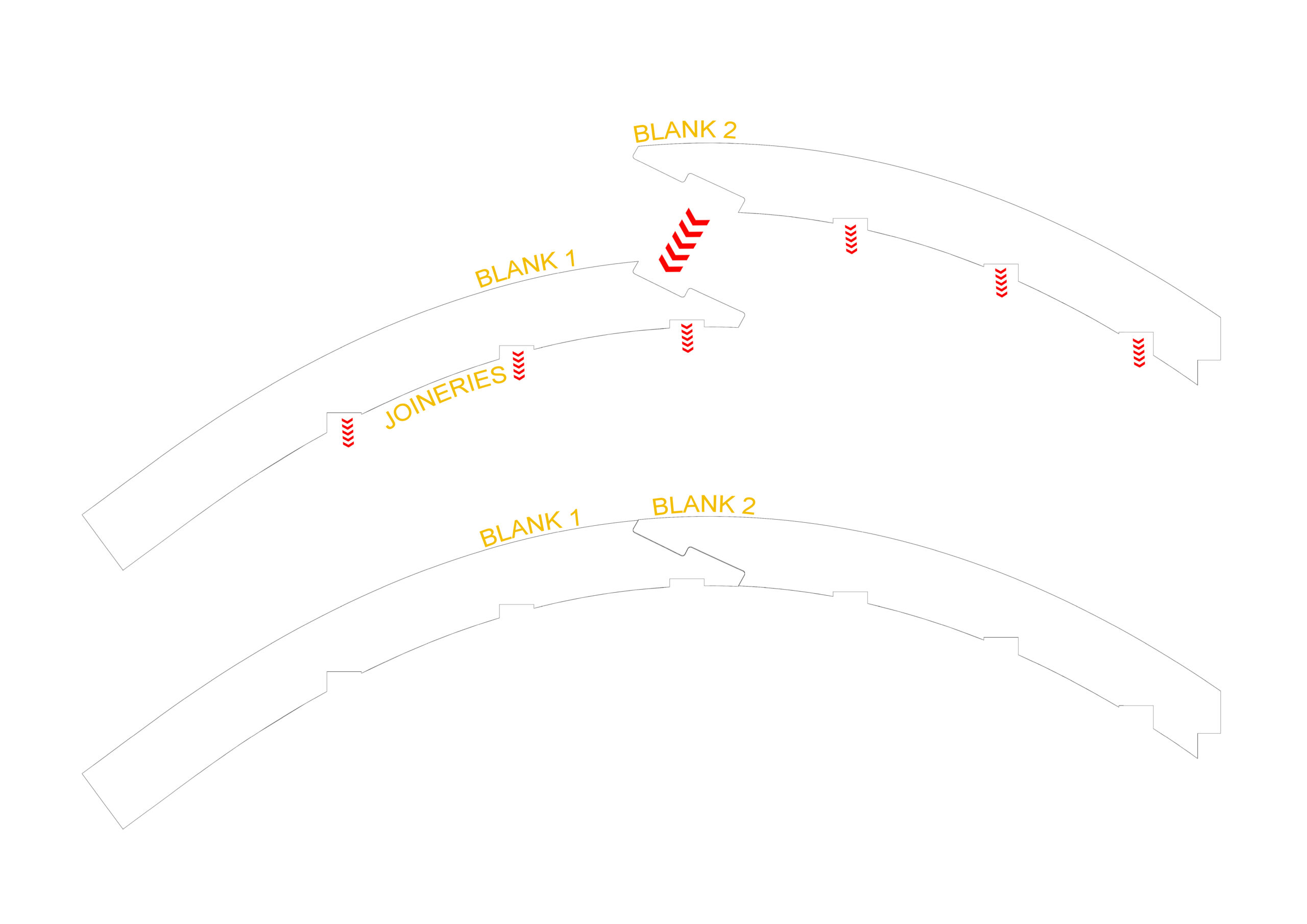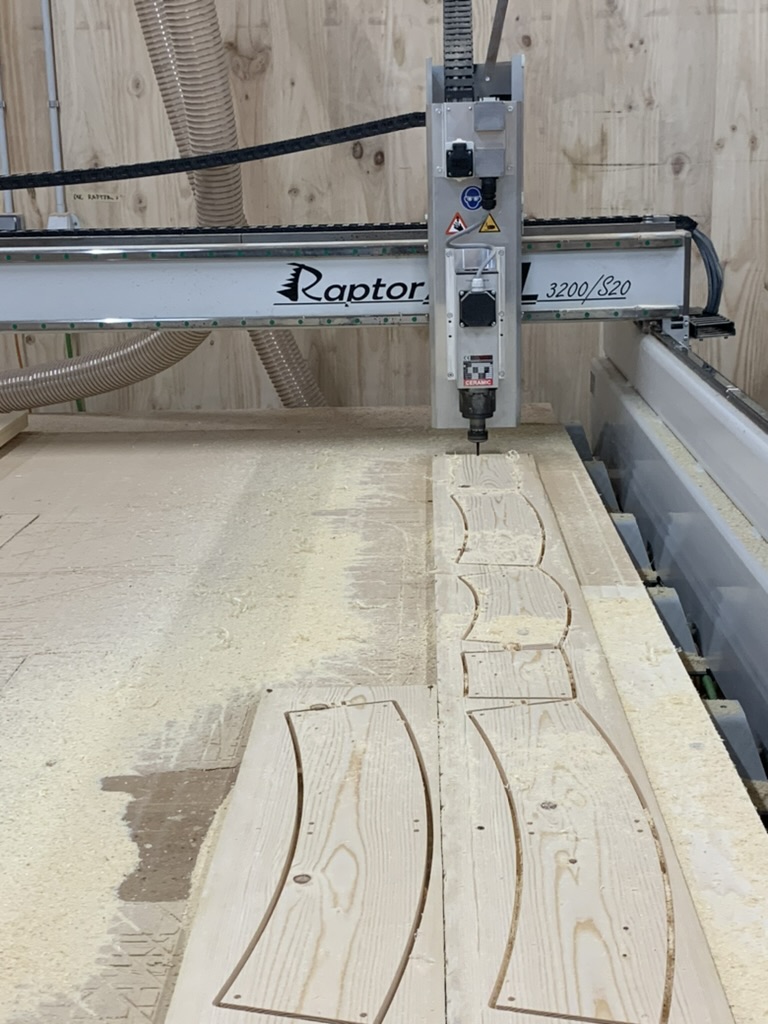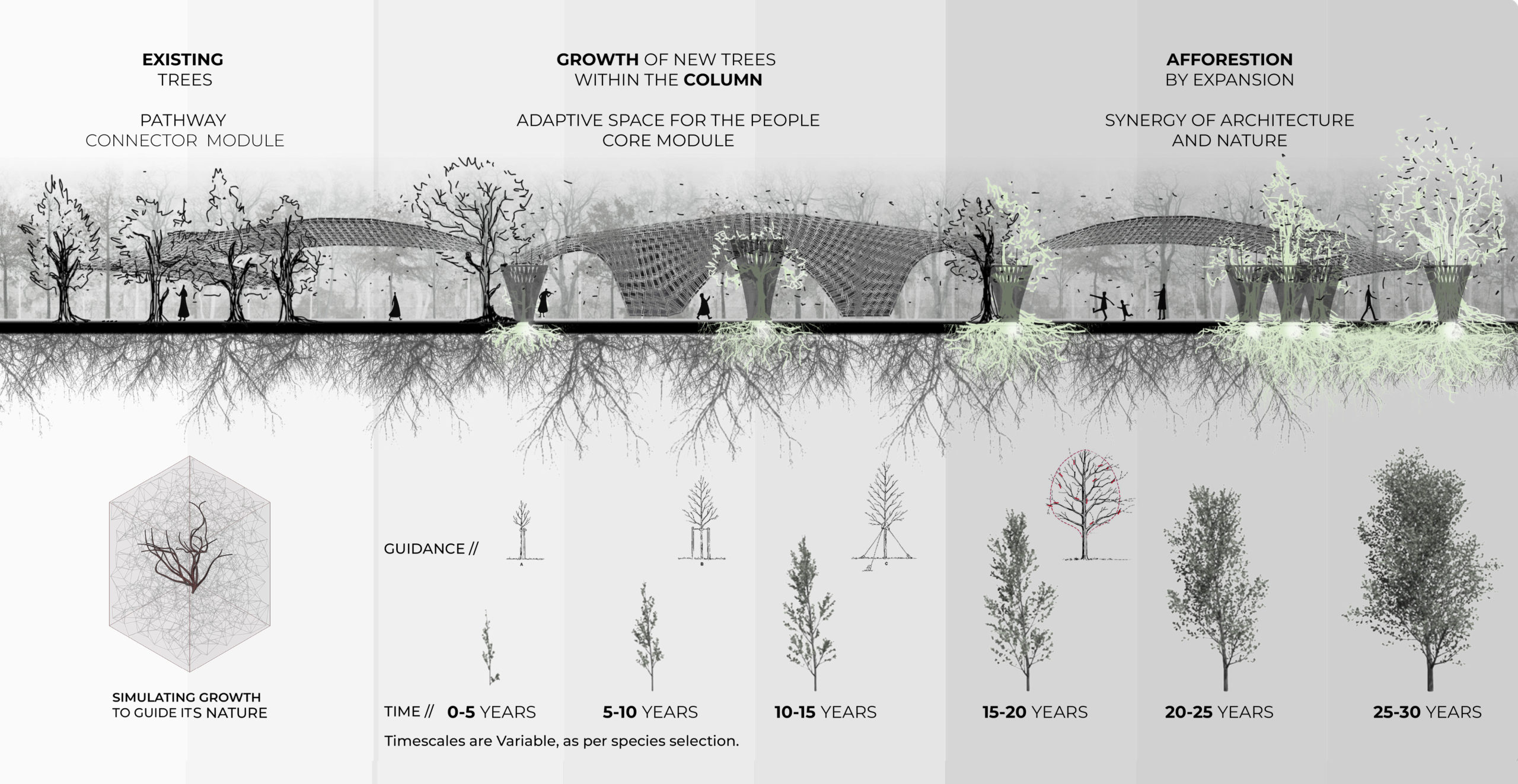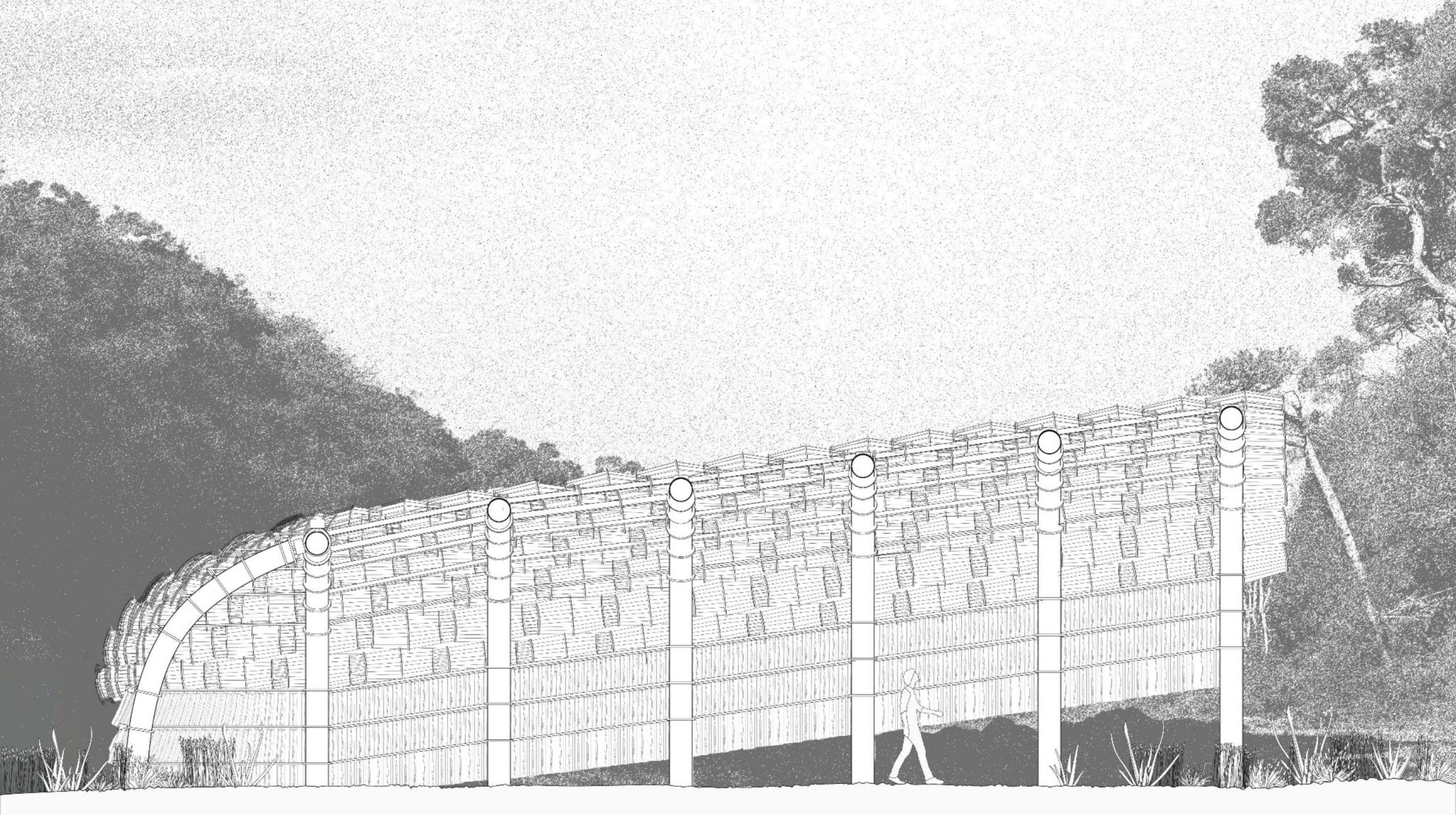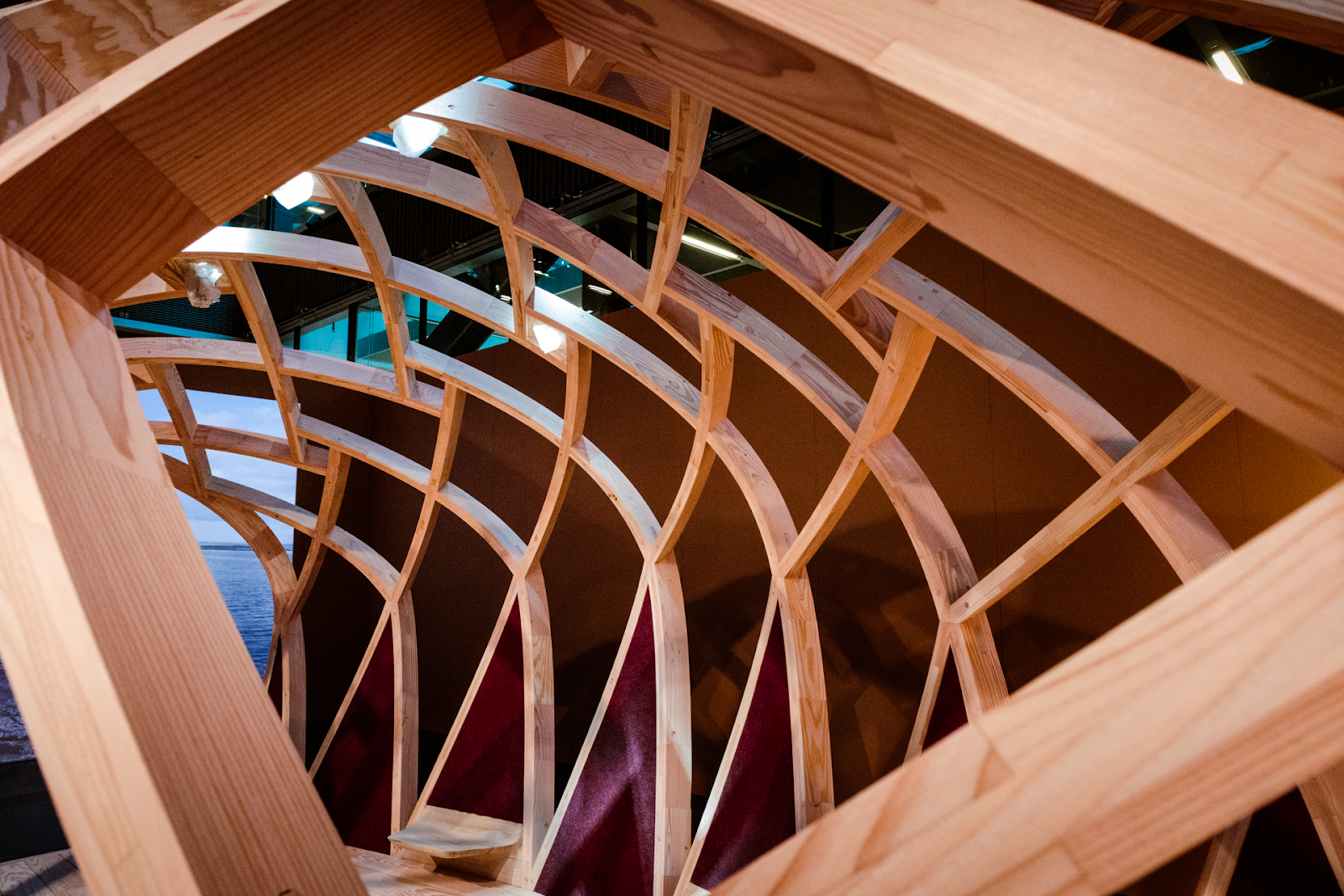
Credits: Marina Spa Prototype / Helen & Hard, Tom Svilans, Design-to-Production GmbH, Winther A/S
The deepening climate crisis amidst a rapidly growing human population requires a radical shift towards more sustainable and resource-efficient methods of construction. Timber – a renewable and familiar biogenic resource – is at the forefront of this necessary transformation of the construction industry. Its potential for use in demanding applications and complex structures at large scales has been demonstrated time and time again. The large and varied palette of engineered timber products demonstrate all the ways in which timber can be aggregated, assembled, and allocated to meet a particular design challenge.
But timber is a fickle and complex material. Its biogenic origins are at the root of this difficulty: long cellular growth in layered and branching fibre topologies results in highly anisotropic behaviour and a very heterogeneous distribution of material properties. Its nature must be understood in order to effectively wield it towards ambitious architectural objectives.
This seminar will tackle the difficulties and peculiarities of designing and fabricating timber architecture and present visions of future timber architecture that leverage contemporary capacities for representing, simulating, and analysing wood elements. Students will be familiarised with the current state of the art in timber design, digital modelling, and construction. They will use this knowledge to explore, speculate, and propose ambitious new visions of future timber architecture, guided by a sensibility towards material affordances, notions of a sited and contextualised resource, and a critical approach to circularity, adaptation, and material life cycles.
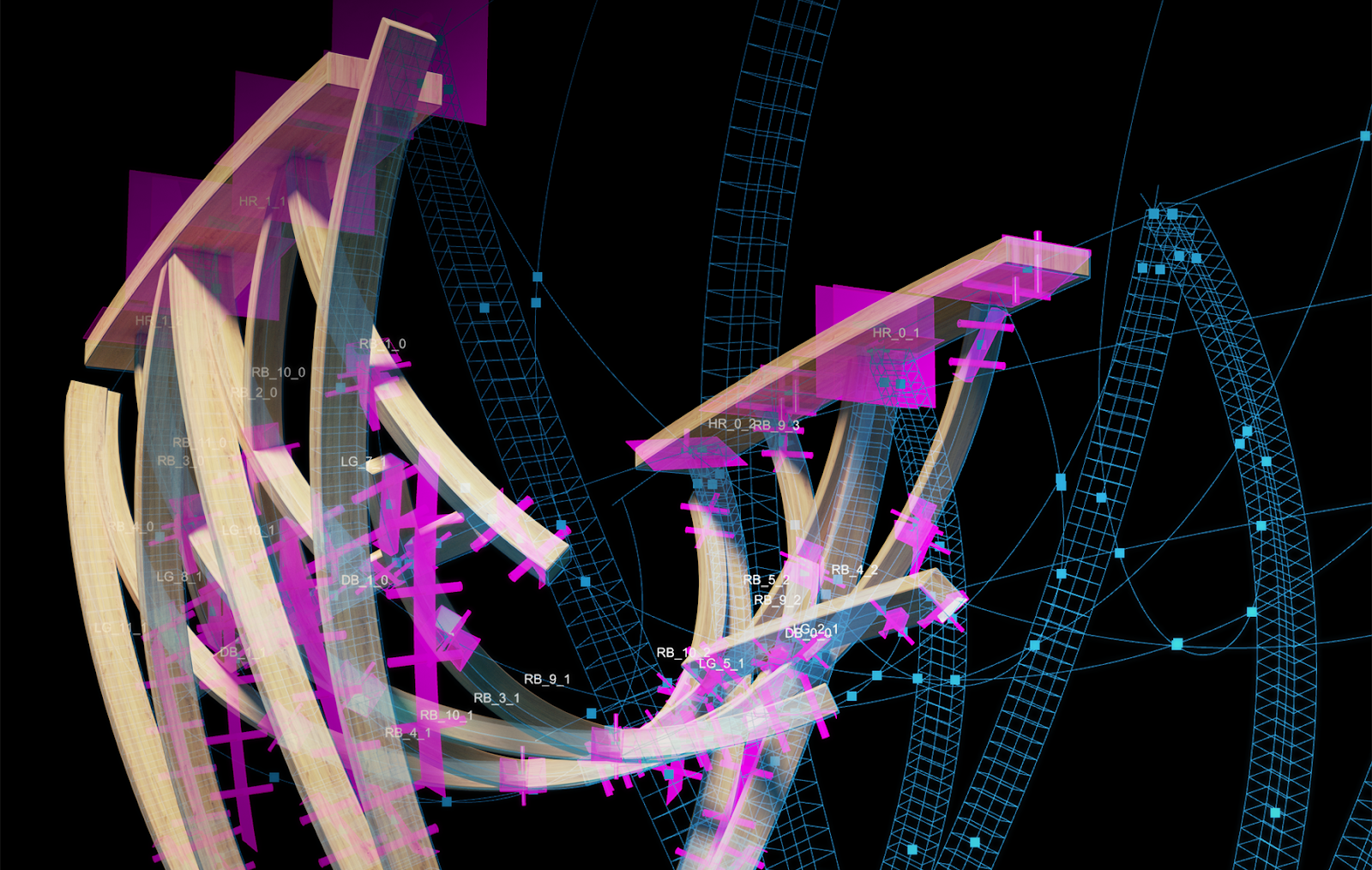
Credits: Fabrication-led design modelling / Tom Svilans
Learning Objectives
At course completion the student should be able to:
- Articulate and demonstrate the concept of «digital woodcraft» in an individual design practice.
- Demonstrate a decent competency in the tools of digital woodcraft: digital modelling and fabrication.
- Articulate a critical position in the broad field of timber design, architecture, and construction.
- Demonstrate an understanding of digital design-to-fabrication workflows.
- Understand the basic principles, constraints, and concerns in timber fabrication and construction.





